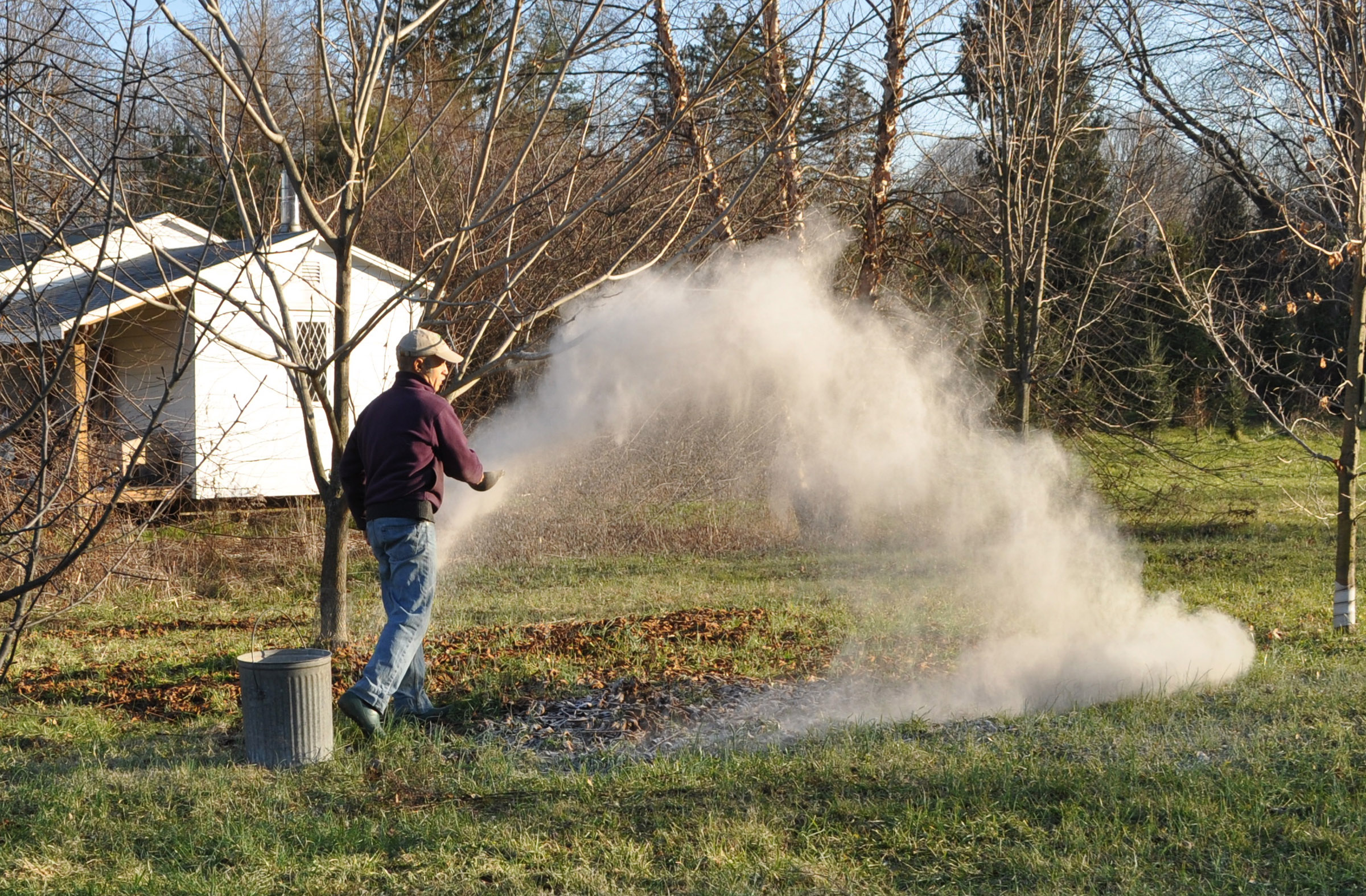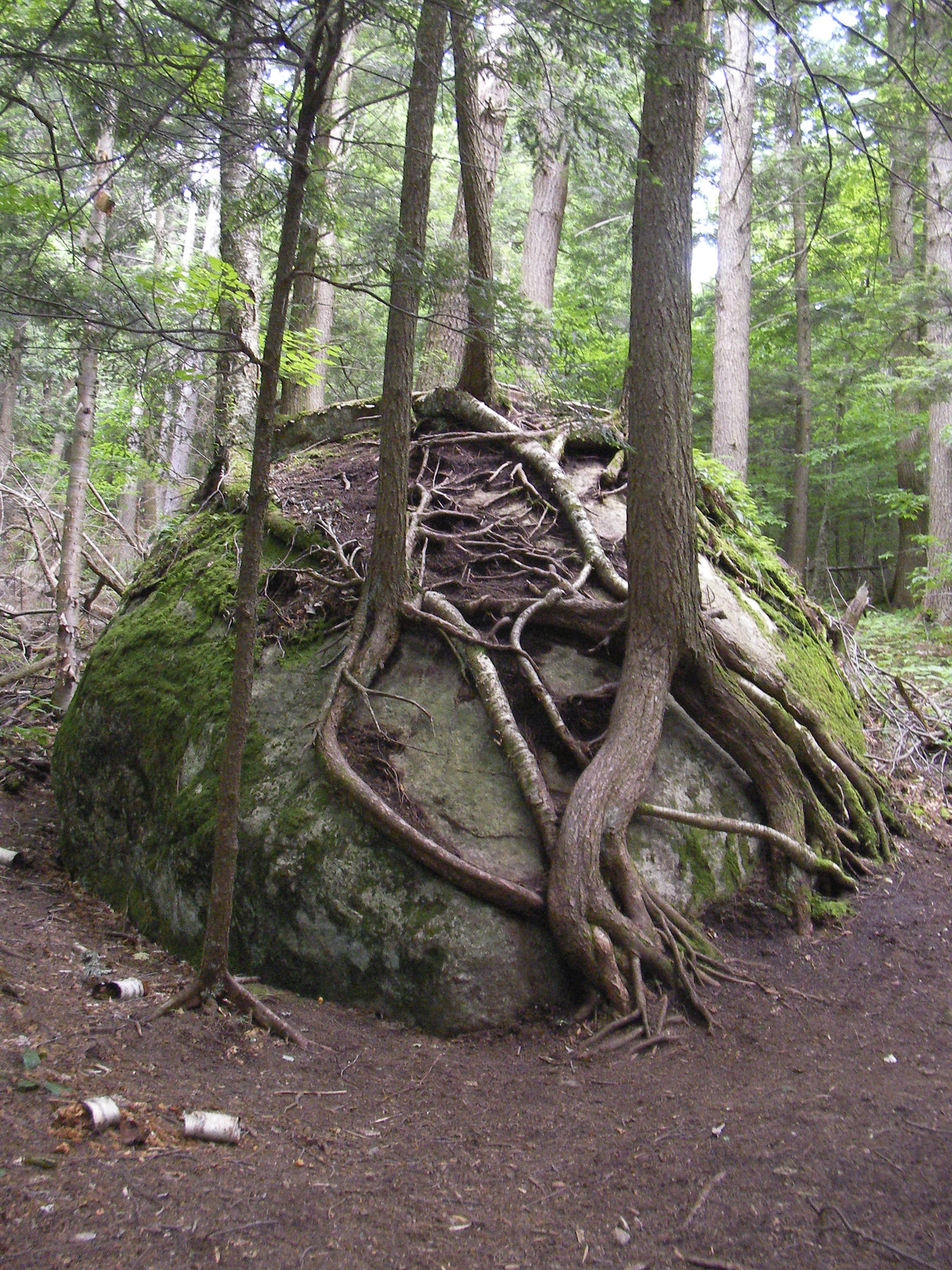OCCULT PRACTICES?
/5 Comments/in Pests, Soil/by Lee ReichPotash Kalium Connection
I wonder if my neighbors suspect that I’m engaging in some sort of occult ritual as I take rounds through the farmden followed by puffs of grey smoke. Perhaps I’m entreating tiny gnomes living within the soil to keep weeds at bay next season? Or begging garden gremlins to make my soil fertile? No, and again no! I’m merely spreading wood ashes.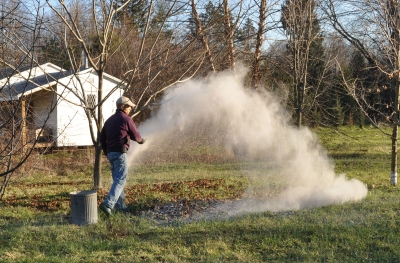
I must be careful with my terminology: I’m not dumping wood ashes; I’m fertilizing my soil with wood ashes. Wood ash is a rich source of potassium, a nutrient required by plants in amounts second only to nitrogen. Potassium helps build strong stems and helps plants resist disease. It also regulates the opening and closing of stomata, the tiny pores in leaves through which gases pass for photosynthesis.
The close connection between potassium and wood ash is reflected in a traditional source of, and the root of the word, potassium — “potash.” Read more
MICROFORESTRY
/6 Comments/in Tools/by Lee ReichSomething to Do
During a sunny, cold day a few years ago, I was itching for something to do outdoors. I already had piled mulch on top of last year’s mulch beneath the blueberries, the vegetable plot was weed-free, and I usually defer pruning until later in winter. So what was there to do? I decided to clear some “forest.”
Actually, the forest was one mulberry tree, a seedling that had grown up in the wrong place, but which I had neglected for a few years until its trunk had a girth of eight inches. I had cut back the top the summer previous to at least slow its growth. But it was time to emulate on a small scale one of the tasks of the early settlers here: digging out the stump.
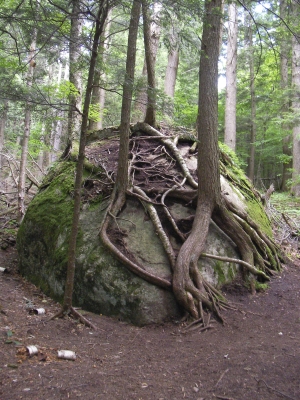
Tree roots in the Adirondacks
Before I began, I gathered up what I would need for the job: a spade whose blade I sharpened with a file; a pruning saw; a pry bar; and some fill soil. But first let’s backtrack a moment. When I lopped back the tree the previous summer, I had cut off all the branches and left a single trunk about five feet tall. A length of trunk provides a handy lever for working a stump out of the soil. Read more
HOT OFF THE PRESS
/1 Comment/in Planning/by Lee ReichA New Map
The coldest nights of the year are due to arrive in about a month. These frigid nights might test the hardiness of trees, vines, and shrubs, perhaps nipping back a few branches here or there on some plants, perhaps killing others outright. Though bitter cold is a few weeks away, I have done what I could to prepare plants for the onslaught.
The first step in preparing any plant for the winter is knowing how cold it’s going to get. There’s no crystal ball offering this information, but decades of weather data have been compiled by the U. S. Department of Agriculture to prepare the USDA Hardiness Zone Map, which is helpful in predicting the probable minimum temperature for an area. The map has gone through numerous incarnations of increasing accuracy and . . . drum roll . . . recently this year the latest incarnation was revealed.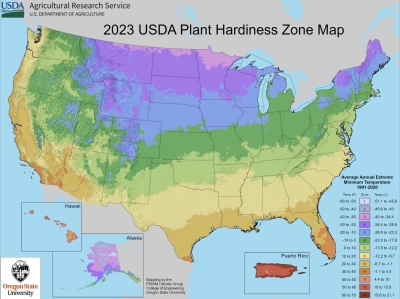
So, what’s new? The increasing accuracy reflects minimum temperatures measured at 13,625 weather stations averaged over 30 years. As before the country is divided into zones denoted by color and number, 13 of them, the lower numbers reflecting colder regions. Each zone denotes the average coldest temperature in that time period, not the minimum temperature ever experienced.
You often see this map, the country covered over my squiggly lines filled in with a color. Big change this year: The USDA offers this map only online Read more

